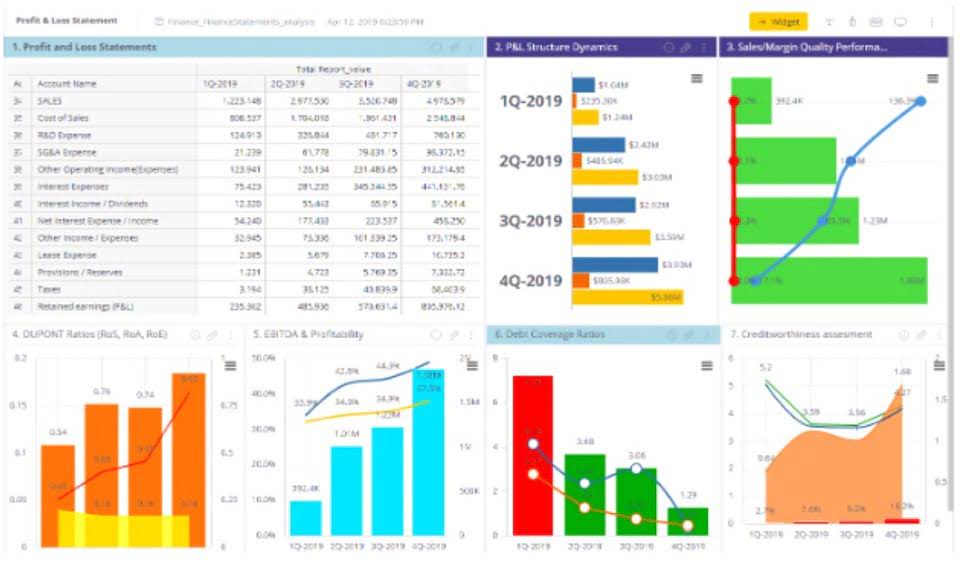With liquidity, you’re assessing how well the company can run its operations in the short term. One of the best places to keep an emergency fund can be a high-yield savings account. Once you have a solid emergency fund in place, you can begin to use less liquid assets to achieve your longer-term financial goals. When there is high liquidity, and hence, a lot of capital, there can sometimes be too much capital looking for too few investments. This can lead to a liquidity glut—when savings exceeds the desired investment.
- An asset’s liquidity is a function of how easily it can be converted into cash.
- The reason these are among the most liquid assets is that these assets will be turned into cash more quickly than land or buildings, for example.
- So, while volume is an important factor to consider when evaluating liquidity, it should not be relied upon exclusively.
- As evidenced by the global financial crisis of 2008, banks historically fail when they lack liquidity, capital, or both.
Quick Ratio
High market liquidity means that there is a high supply and a high demand for an asset and that there will always be sellers and buyers for that asset. If someone wants to sell an asset yet there is no one to buy it, then it cannot be liquid. Solvency and liquidity are both terms that refer to an enterprise’s state of financial health, but with some notable differences. Yarilet Perez is an experienced multimedia journalist and fact-checker with a Master of Science in Journalism. She has worked in multiple cities covering breaking news, politics, education, and more.
How cash ratio is calculated
These are any outstanding bill payments, payables, taxes, short-term loans or any other kind of short-term liability that your business must pay back within the next 12 months. In this guide we’ll go over exactly what liquidity is, how to measure it, and what to do when it’s running low. We can draw several conclusions about the financial condition of these two companies from these ratios. In the fiscal year 2021, Disney reported total revenue of $67.4 billion. The company also emerged from the pandemic and reported a net income of $2.5 billion, turning the company around from a loss in 2020.
Debt-to-Assets
Liquidity ratios are important to investors and creditors to determine if a company can cover their short-term obligations, and to what degree. A ratio of 1 is better than a ratio of less than 1, but it isn’t ideal. The more revenue you have, the more likely you’ll be able to pay your bills. “Sell more” might sound painfully obvious, but when a liquidity crisis is looming, it’s nice to have all your options clearly on the table. Inventory is all the goods and materials a business has stored away for future use, like raw materials, unfinished parts, and unsold stock on shelves. Of the four current asset types, it’s the least liquid, because it’s the hardest to turn into cash.
Understanding Financial Liquidity
For a period of time this firm might have significantly more debt than assets, but as long as sales and growth remain strong it would also be misleading to consider the firm insolvent. By measuring solvency in both of the ways described above, you can get a better picture of the company’s overall health. Liquidity is a prime concern in a banking environment and a shortage of liquidity has often been a trigger for bank failures. However, a bank without sufficient liquidity to meet the demands of their depositors risks experiencing a bank run. The result is that most banks now try to forecast their liquidity requirements and maintain emergency standby credit lines at other banks. With liquidity ratios, there is a balance between a company being able to safely cover its bills and improper capital allocation.
What Is Solvency?
Banks are often evaluated on their liquidity, or their ability to meet cash and collateral obligations without incurring substantial losses. In either case, liquidity management describes the effort of investors or managers to reduce liquidity risk exposure. If a company has to make regular debt service payments—or even payments to fund daily operations—it’s crucial to have a steady stream of cash and/or or assets that can quickly be converted to cash. Since the three ratios vary by what is used in the numerator of the equation, an acceptable ratio will differ between the three. It is logical because the cash ratio only considers cash and marketable securities in the numerator, whereas the current ratio considers all current assets. In theory, a company with a current ratio of less than one doesn’t have enough current assets to cover its current liabilities, and might have liquidity problems.
Solvency Ratios vs. Liquidity Ratios
Moreover, the Fed guides short-term interest rates with the federal funds rate and uses open market operations to affect long-term Treasury bond yields. During the global financial crisis, it created massive amounts of liquidity through an economic stimulus program known as quantitative easing. Through the program, the Fed injected $4 trillion into the economy by buying bank securities, such as Treasury notes. High liquidity occurs when an institution, business, or individual has enough assets to meet financial obligations. Low or tight liquidity occurs when cash is tied up in non-liquid assets, or when interest rates are high, since that makes borrowing cost more.
If a company has $1.5 million in assets, of which $1 million are liquid, that is a sign it is financially healthy. The company’s capital is not tied up in burdensome fixed assets that depreciate over time, and it is better positioned to weather any potential financial storms. If a company buys inventory, sells it https://accounting-services.net/ at a profit and generates positive cash flow, its liquidity will go up. If it buys a vehicle or piece of equipment that doesn’t get used or breaks down frequently, the company’s ability to create value with the asset is hampered. Meanwhile, the loan still has to be repaid with cash, which makes liquidity go down.
A rising debt-to-equity ratio implies higher interest expenses, and beyond a certain point, it may affect a company’s credit rating, making it more expensive to raise more debt. If, on the other hand, the company has low liquidity, it may have problems paying its bills on time. Such a liquidity bottleneck is feared by financial managers because it leads to insolvency if it persists for a long time. In a bid to manage the situation, Acme Corp. considers selling some of its long-term investments.
The most stringent and conservative of all liquidity ratios is the cash ratio, which takes into account only a company’s cash, cash equivalents, and marketable securities among its current assets. Imagine a company has $1,000 on hand and has $500 worth of inventory it expects to sell in the short-term. In addition, the company has $2,000 of short-term accounts payable obligations coming due. In this example, the company’s net working capital (current assets – current liabilities) is negative. This means the company has poor liquidity as its current assets do not have enough value to cover its short-term debt. Based on its current ratio, it has $3 of current assets for every dollar of current liabilities.
Above and beyond your checking account, you should hold some liquid assets so you can rapidly get cash when you need it most. Cash in a bank account or credit union account can be accessed quickly and easily, via a bank transfer or an ATM withdrawal. As evidenced by the global financial crisis of 2008, banks historically fail when they lack liquidity, capital, or both. This is because banks can’t remain solvent when they don’t have enough liquidity to meet financial obligations or enough capital to absorb losses.
The more cash they have on hand and the more liquid assets they can sell for cash, the easier it will be for them to continue to make their debt payments while they look for a new job. But unless the financial system is in a credit crunch, a company-specific liquidity crisis can be resolved relatively easily with a liquidity injection, as long as the company is solvent. This route may not be available for a company that is technically insolvent since a liquidity crisis would exacerbate its financial situation and force it into bankruptcy. In addition to the cash and accounts they manage for their customers, banks’ liquid assets also include central bank reserves and investments in safe investment products, e.g. government bonds.
Market liquidity refers to the extent to which a market, such as a country’s stock market or a city’s real estate market, allows assets to be bought and sold at stable, transparent prices. In the example above, the market for refrigerators in exchange for rare books is so illiquid that it does not exist. When we talk about liquidity in accounting, we mean how easy it is for a company to meet what advantage does scenario analysis have over sensitivity analysis its financial obligations. If a company has a high level of liquidity, it can pay its invoices on time and in the correct amount, and the risk that it will run into payment difficulties is low. Whereas banks are fundamentally geared towards managing deposits and loans, corporations navigate through a broader spectrum of operational and financial activities that can impact liquidity.
Therefore, we have compiled some examples of where liquidity often appears and what it means in the respective context. Imagine you’ve just started a field service business—window washing or HVAC repairs, for example. But if too much of your cash is tied up in that truck, your liquidity could be affected in a negative way that prevents you from getting a loan to hire more people.
Some things you own such as your nicest shirt or food in your refrigerator might be able to sold quickly. Others such as a rare collectible coin or custom painting of your family may be a bit more difficult. The relative ease in which things can be bought or sold is referred to as liquidity. Again, the higher the ratio, the better a company is situated to meet its financial obligations. The higher their liquidity, the better the financial health of a business or a person is.





